As tech enthusiasts, you’re likely intrigued by Generation Z’s distinct approach to work and their demand for flexibility. Remote work is essential for this generation, as it aligns with their digital-first mindset. It offers the autonomy and seamless tech integration they crave.
The Internet of Things (IoT) is crucial here, creating an interconnected ecosystem that blends professional and personal spaces. It includes smart home offices that adapt to individual needs and wearable devices that monitor productivity and well-being. It enables Gen Z to thrive in a work environment that is efficient, secure and tailored to their tech-savvy preferences.
Gen Z’s Remote Work Preferences
You may recognize this generation’s strong emphasis on work-life balance in their career choices. With 55% of Gen Z graduates preferring remote or hybrid work, their comfort with technology underscores a desire for autonomy. They expect innovative and seamless remote work solutions that align with their lifestyles.
The IoT is pivotal in meeting these expectations, offering solutions like smart home offices that adapt to personal preferences and secure, interconnected devices that facilitate smooth communication and productivity. By understanding their needs, you can appreciate how the IoT empowers Gen Z’s unique approach to work.
“ With 60% of Gen Z employees struggling with motivation at work, the desire for flexible, innovative and engaging solutions becomes more crucial. IoT technology provides seamless, secure remote work environments that help boost productivity and align with their tech-forward mindset.”
IoT Technologies Supporting Remote Work
Gen Z’s demand for innovative, flexible and tech-centric workplaces has led to the rapid adoption of IoT technologies. Here’s how it can create efficient home offices, foster seamless collaboration and enhance productivity in remote work settings.
Smart Office Setups
With over 15 billion devices connected to the IoT in 2023, you can see how this vast network transforms home workspaces into efficient productivity hubs. Connected devices like smart speakers, lighting systems and climate controls automatically adjust to user preferences. It creates an environment that enhances focus and productivity.
Advanced scheduling systems can synchronize meetings across different devices, while AI-powered task managers streamline your daily workflow. This interconnected ecosystem of smart devices enables seamless, tailored remote work experiences that align perfectly with Gen Z’s tech-forward expectations.
Wearables
Wearable devices offer a unique way to monitor health, productivity and collaboration while working remotely. Fitness trackers can remind users to move regularly, helping them maintain a healthy balance between work and wellness. Smartwatches sync with calendars to notify wearers of upcoming meetings and track productivity metrics. It also provides valuable insights into work patterns.
Some wearables facilitate seamless communication, like smart earbuds that can translate conversations in real-time or offer voice-activated access to your favourite virtual meeting platforms. With these tools, Gen Z workers can enhance collaboration and stay on top of tasks while prioritizing well-being in a tech-enabled, productive manner.
IoT-enabled Communication Devices
Gen Z is accustomed to instant access to information, people and products, so IoT-enabled communication devices are crucial in promoting seamless interaction. Smart hubs and AI-driven assistants instantly connect Gen ZZ employees with colleagues. It provides real-time access to files, schedules and project updates.
Video conferencing devices with smart cameras and noise cancellation make virtual meetings more efficient and lifelike. It helps workers focus on collaboration without distractions. With IoT tech bridging the virtual and physical communication gap, you can deliver the fast, interactive, connected experience Gen Z expects in a remote work environment.
“ Among 18 to 20-year-olds, the average household contains three IoT devices reflecting their tech-savvy and connected lifestyle. This network of devices supports their need for instant communication and seamless access to information”
Enhanced Productivity and Collaboration
IoT devices streamline communication and collaboration by offering seamless connectivity through smart hubs, virtual assistants and integrated platforms. You can quickly share files, schedule meetings and receive reminders across various devices without missing a beat. These tools enable productivity gains, allowing real-time data sharing, reducing miscommunication and automating routine tasks.
IoT tech strengthens remote workers’ team management by giving managers access to productivity insights and collaboration analytics. It helps them tailor their approach to each team member’s strengths and needs. It fosters a more cohesive, transparent and efficient work environment that enhances team performance.
“ In North America and Europe, 57% of organizations use IoT technology to streamline processes and increase efficiency. These businesses leverage connected devices to automate workflows, improve data sharing and monitor productivity.”
Security Implications and Data Privacy Concerns
In a recent study, 33% of IoT users expressed concern about potential attacks on IoT devices affecting critical operations. As you navigate remote work, these security challenges include unauthorized access, data breaches and malware attacks that can compromise productivity.
However, workers can safeguard their IoT-enabled home office with encryption to protect data, multifactor authentication for secure logins and network segmentation to keep sensitive information isolated.
It’s also crucial to update device firmware regularly, change default passwords and use secure network connections like VPNs. Following these best practices ensures employees’ IoT devices remain a safe and productive part of the remote work environment.
Harnessing IoT for a Productive Remote Workforce
Organizations must harness IoT tech to create a flexible and secure remote workforce. Leveraging connected devices to streamline communication and collaboration while enhancing security protocols can meet the tech-forward expectations of Gen Z and beyond.










